Via Podiensis: Halfway to Halfway
This morning, after a hasty breakfast, I left the gîte at about 7:15. There was enough light to walk, and the air was cool, but the sky was still that leaden color of yesterday. My goal was to get to my first village – Montcuq – no later than 9:30 so I could get a proper breakfast.
My dinner last night was out of my food stash, as all of the demi-pension gîtes had been filled up by a large group walking, and the nearest restaurant was in the next village.
I was soon off on a gravel road through terrain very similar to yesterday, although I did spot some large animals right away – horses grazing the nearby field. in the distance, I could hear the hooting and calling of birds.
I almost immediately began a climb up scree and rock. After just a bit, it leveled out, and was even comfy dirt track for a while. Most of this was under a tree cover, and like yesterday I would be moving in and out of it all day.
I saw many more pilgrims out on the road. I passed at least four of them before I arrived at the lovely little chapel of Saint-Jean le Froid. It’s not much, architecturally, although there are three stained glass windows here that are absolutely exquisite. And there is more evidence of devotion and care here than in the parish church of the village I just left.
While I was in the chapel praying, several of the pilgrims I previously passed had passed me in turn.
The Camino took me past acres and acres of fields of dead sunflowers. I don’t know if I just missed the season, or they’re not liking the heat and drought. They must’ve been magnificent when they were in full bloom, but now they look like desiccated corpses standing nearly to the horizon.
I took many photos trying to capture the image, but I don’t think any of them really does convey the sense of desolation.
Happily, the Camino returned to the narrow dirt path under tree cover. After crossing a busy road, it was back to gravel road through empty fields. This road, however, begin descending out of the highlands and down into a proper forest. The descent, as descents always do, slowed me down, but the land was beautiful, and I didn’t mind so much.
After running at the bottom of the valley for a while, the path climbed steeply up out of the forest and into the the village of Le Bousquet. Roadwalking now to breakfast. To one side of me was a plowed field and on the other side a vast uncut meadow.
Just before 9 AM, I passed a simple little placard that indicated the exact midpoint between Le Puy-en-Velay and Saint-Jean-Pied-de-Port on the GR 65 route. Of course, since I had taken a diversion to Rocamadour, I probably passed the midpoint of my journey through France a couple of days ago, very probably while I was lost coming out of Rocamadour. In a couple of days, I will pass the one-third mark for the entirety of my Camino through France and Spain.
Fueled by the power of the Rosary (which I prayed for the priests of the Archdiocese of Seattle) I reached the outskirts of Montcuq about 9:20 AM, though I had been catching glimpses of its castle much earlier. At this point, I had to leave the Camino path slightly to find the center of town.
First, I visited the simple but beautiful church of Saint-Privat and prayed there a moment before seeking out some breakfast. I found not one, but three cafés at the same street corner. I ate breakfast under the shadow of a monument to the fallen of the First World War.
Then I made my way to the main church of the village, the monumental Saint Hilaire, with its octagonal bell tower and Gothic windows. The whole neighborhood of the church seem to be guarded by cats, all sitting and warily watching me.
Other than the monumental high altar, the interior decoration of this church is quite simple. But it is the stained glass windows that fill the place with the light and life. They are simply gorgeous.
I prayed a while, and I lit a candle at a simple shrine to Our Lady Untier of Knots.
I had spent a little too much time in the village, and I had a long way to go yet today. So, I didn’t visit the castle tower. Maybe next time. This is definitely a town I would love to visit again for longer. So many bookstores. But for now, back to the Camino!
Interestingly, the waymarked path through town does not correspond to my GPS map in the slightest. I followed the physical markers. I saw at least one other pilgrim, staring into his phone, utterly befuddled. I never did see that guy again; I hope he’s all right. In other news, I saw a single solitary cow as I left town.
It was 10:30 before I left, and I was going to have to hustle to beat the worst of the heat this afternoon.
Soon enough, I was back to dirt paths between the trees and the meadows. I didn’t get very far before putting up my umbrella at a convenient haystack. I took the opportunity to also liberally apply sunscreen and take some last photos, looking back at Montcuq.
And of course, in no time at all, I was climbing steeply back through the forest. rather than just take the umbrella off again, I did something I have never done before. I folded up the umbrella (a tricky prospect considering my head was in the way) but left it clipped to my pack. Now it looked like I was walking around with a giant antenna attached to me.
If there had been anybody around, I imagine they would’ve been puzzled at the sight. But there wasn’t. And it was unfurled again soon enough as the Camino headed out out among vast plowed fields and otherwise empty meadows dotted with rolls of hay. I didn’t see any cows, but I could smell them.
About 11:20, in the middle of the woods, I passed a pair of plinths that were obviously once part of a gate. They read “Château Latour”, but above the name of the château somebody had written “Jesus t’aime” – Jesus loves you.
I passed by what I presume to be the château. It was more or less a farmstead, which had the looks of having started life as a priory. Every building, though, including the church, had been turned to private use.
And then I came to the village of Rouillac. Its church is simple, austere, and it exudes the feeling of medieval holiness. There is a black Madonna here, a copy of the one in Rocamadour. The vault of the apse above the altar contains the remains of medieval frescoes. A haunting, enchanting place.
And it was just outside of this church that I met Jacopo, a young Bavarian student (and part-time EMT). We walked the rest of the day together, deep in conversation.
This land was primarily farmland spread over kilometers of rolling hills. The path itself alternated between gravel and dirt and was sometimes under tree cover, though we were under the exposed sky for a significant part of the day.
The hills were fairly easy, right until the end, when we roadwalked up into the town of Lauzerte, with its beautiful medieval center on the crest of a hill. We finally arrived sometime just after 2 PM.
We immediately hit the tourism office, and they hooked us up with a fantastic gîte run by a real character, an effusive and animated character named Serge. The gîte is of course named “Gîte Chez Serge”.
After the usual pilgrim logistics, Jacopo and I explored the town a bit. I wasn’t quite prepared for how commanding the view from the town is. It positively dominates the surrounding countryside.
Lauzerte is a town of art and art galleries, playful as a town square that curls up at the corner, and serious as a gallery showing with local poets reading from works inspired by the paintings.
The church has definitely seen the worst of both the Hundred Years War and the later religious wars, where the protestants sacked the church. Still, it retains some of its historic beauty, and it has clearly been restored several times since.
Date: 06 September 2023
Place: Lauzerte
Today started: Lascabanes
Today’s Photos!
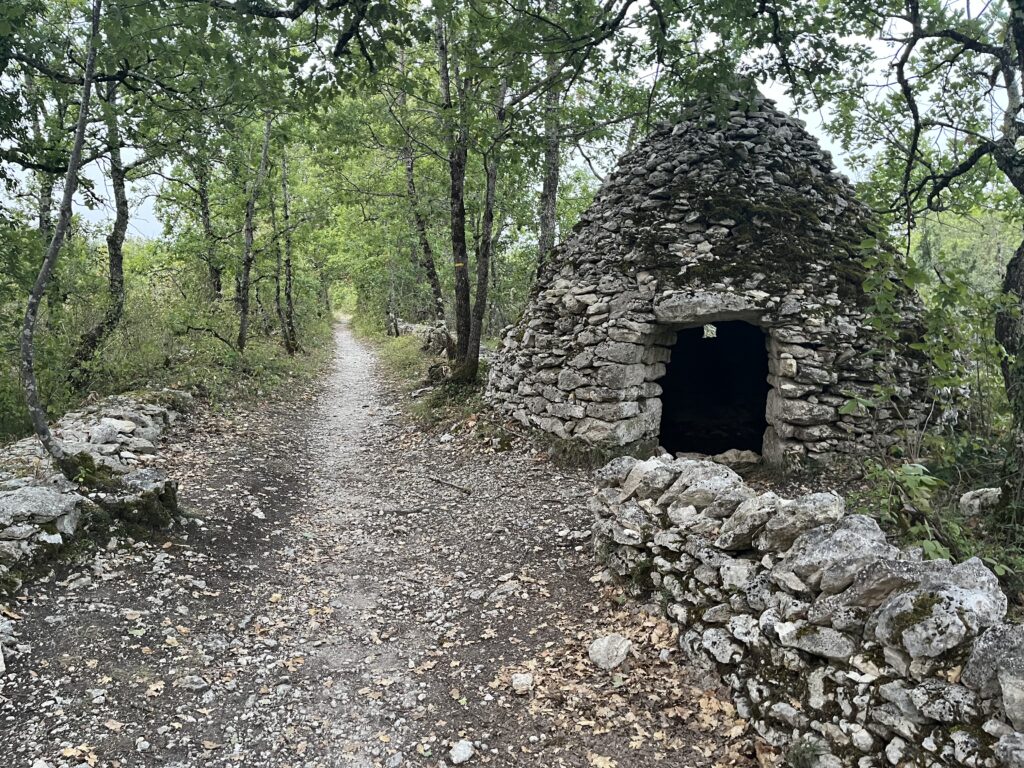
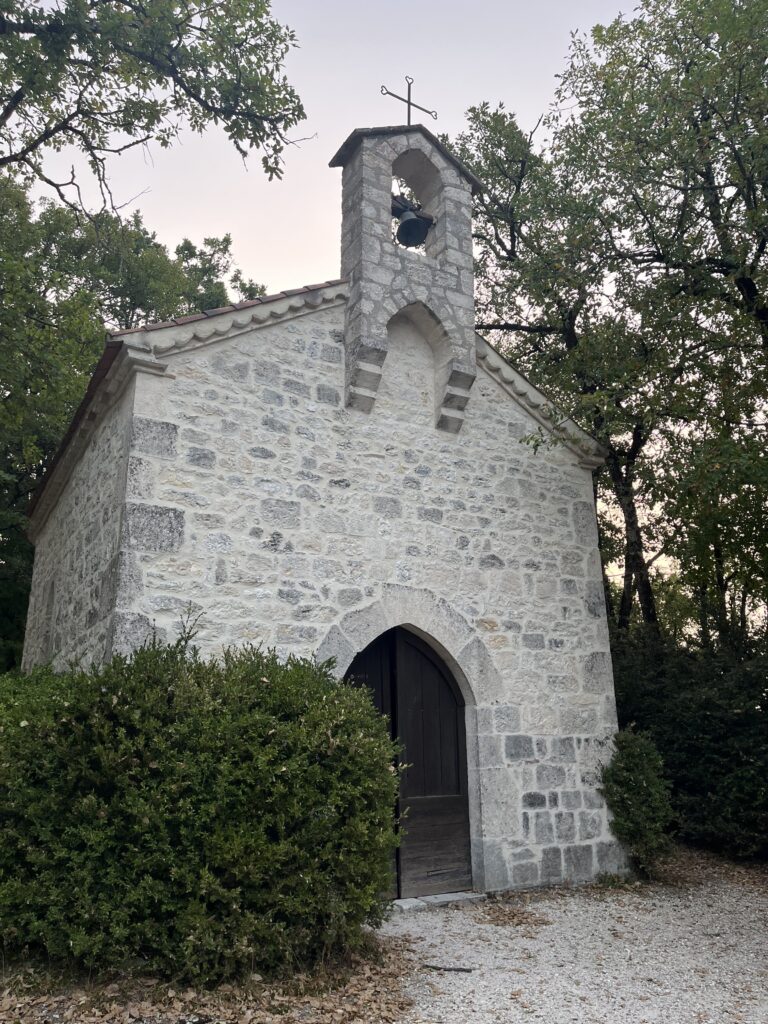

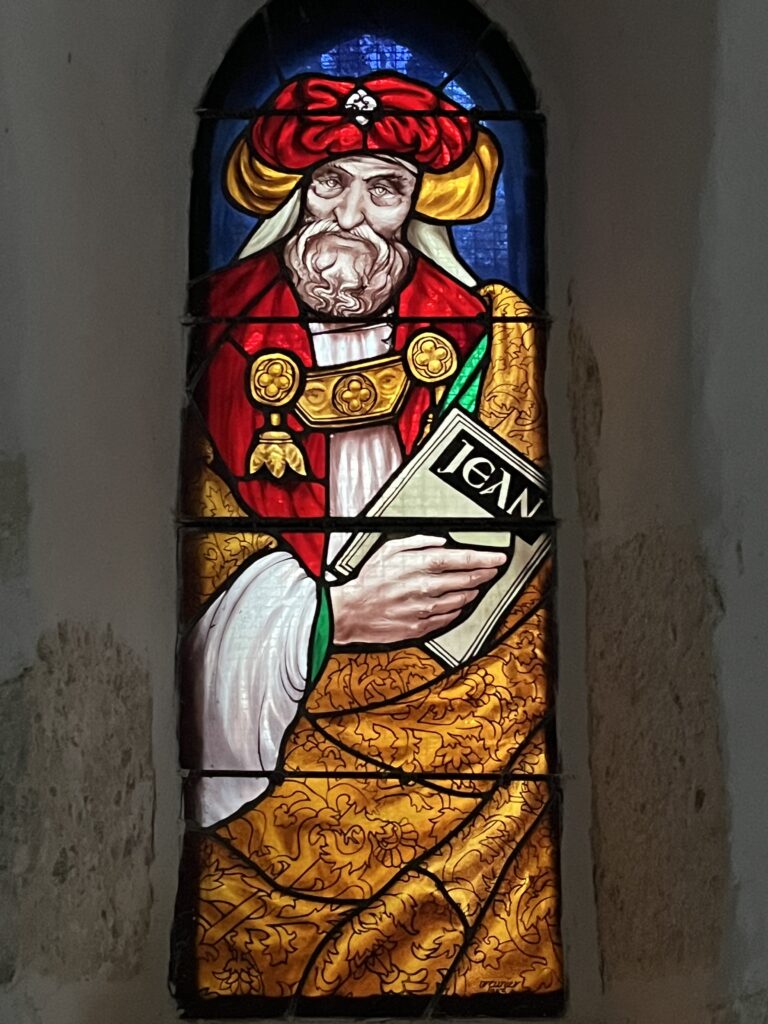



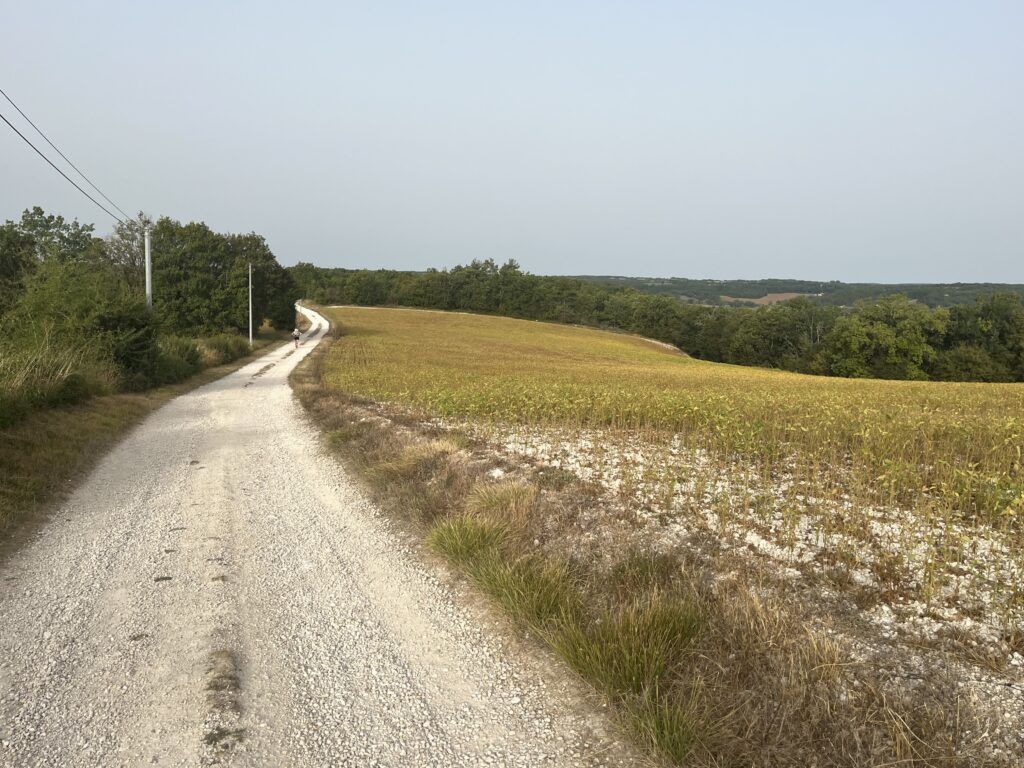
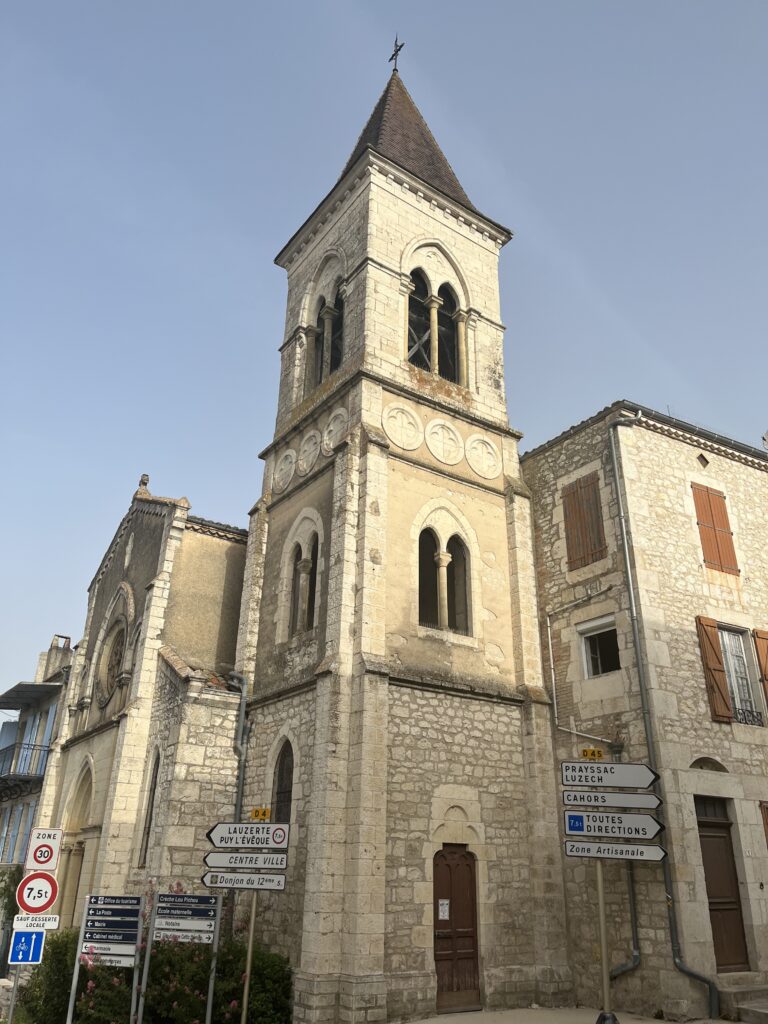
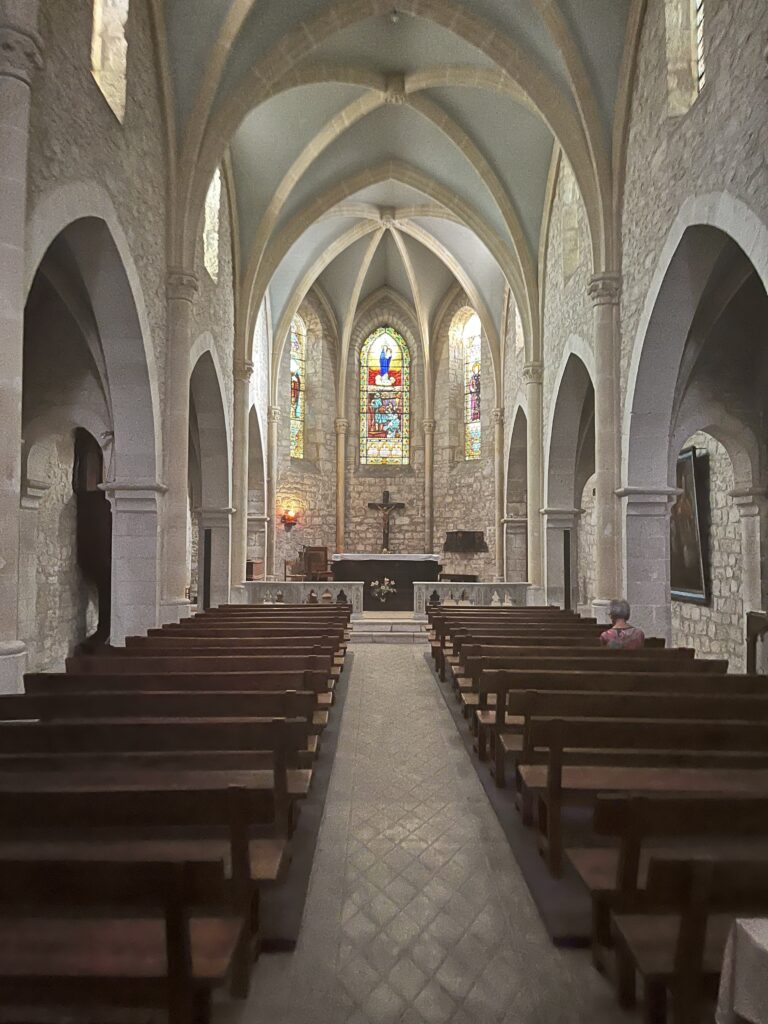
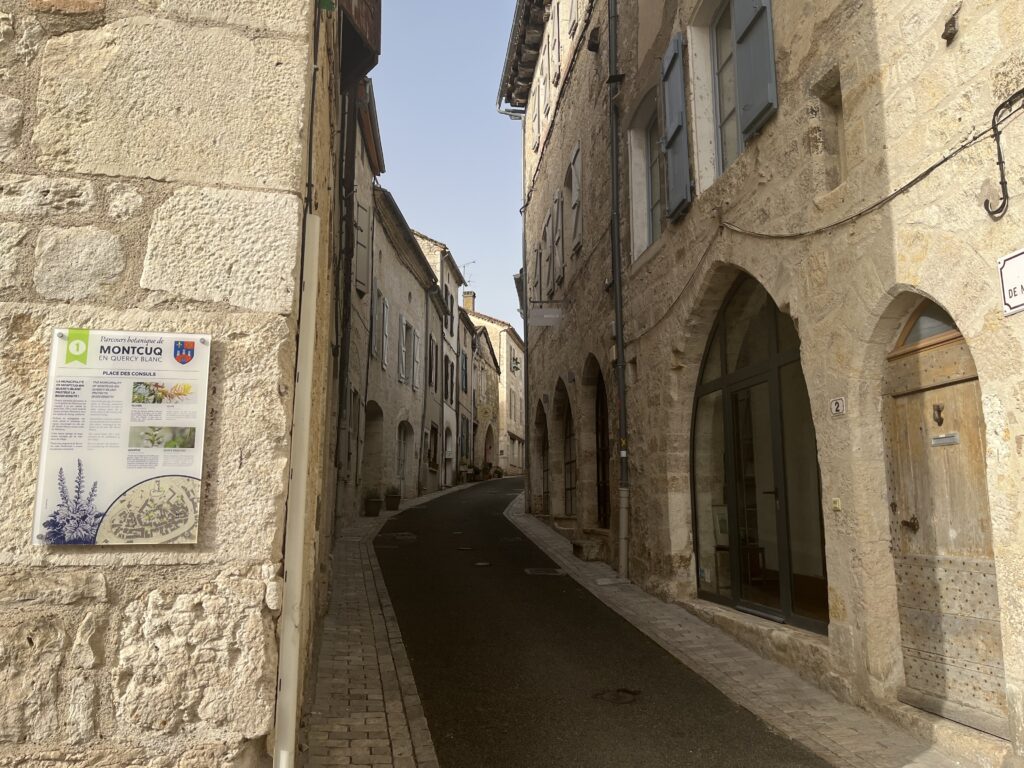

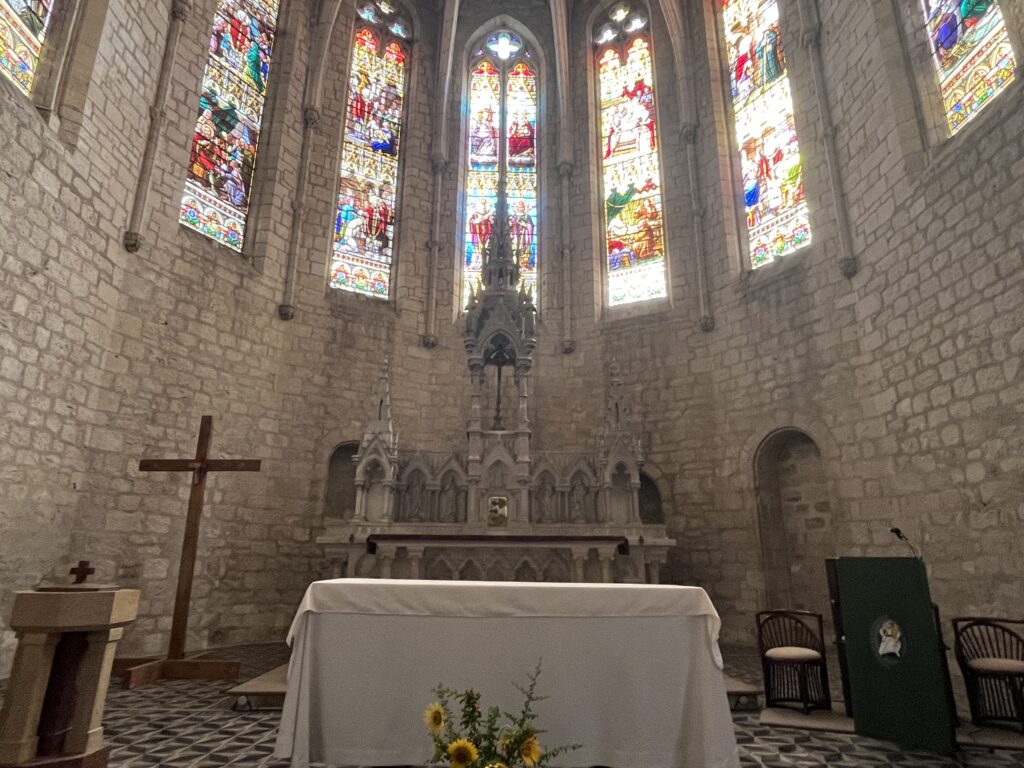

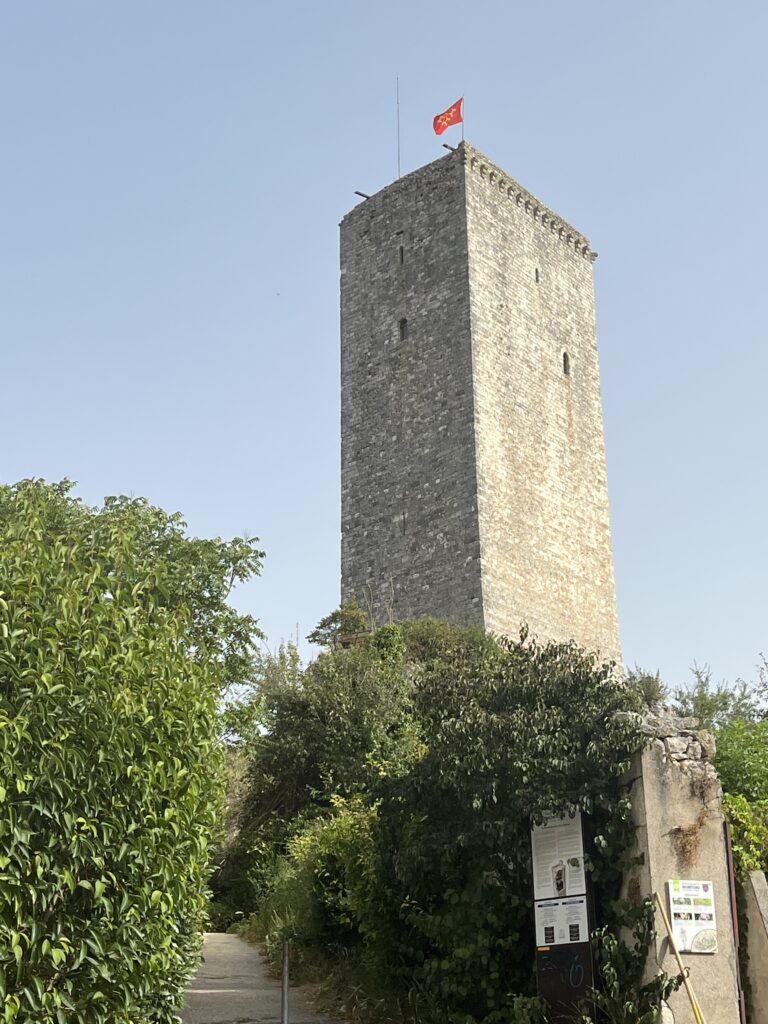



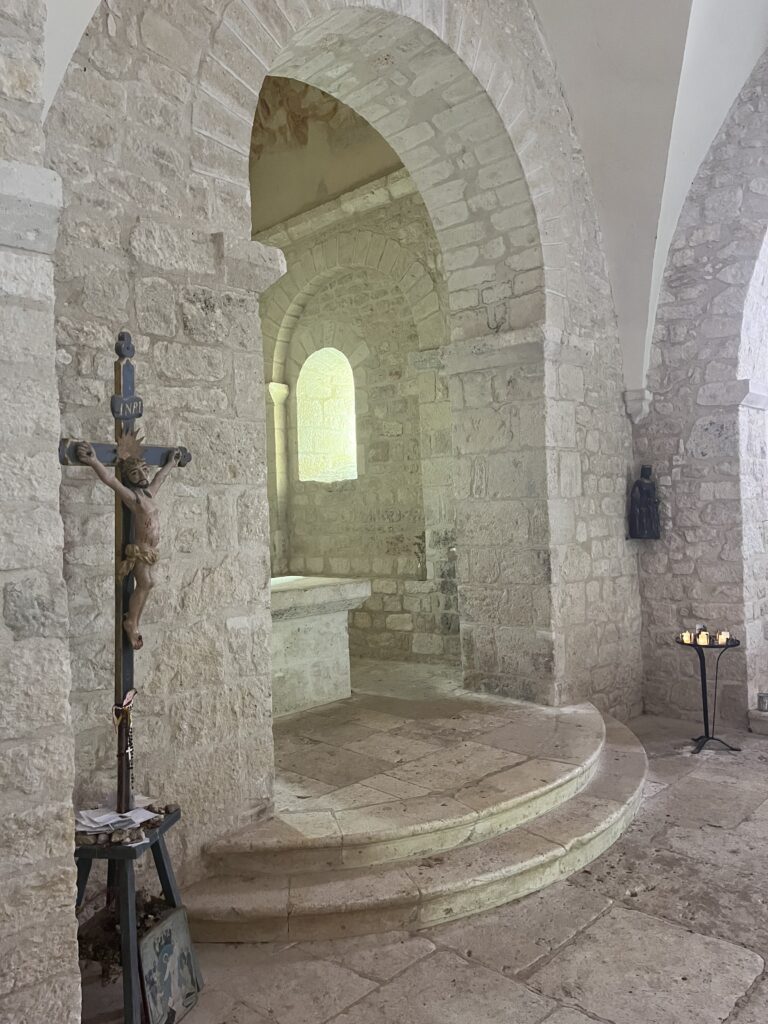
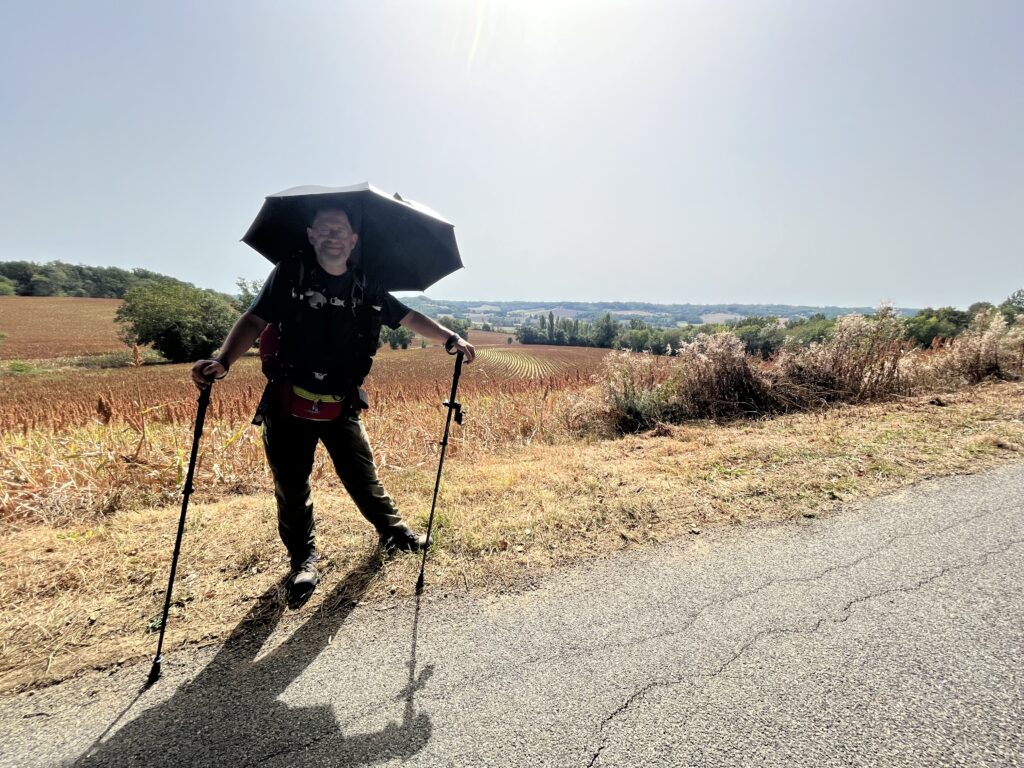
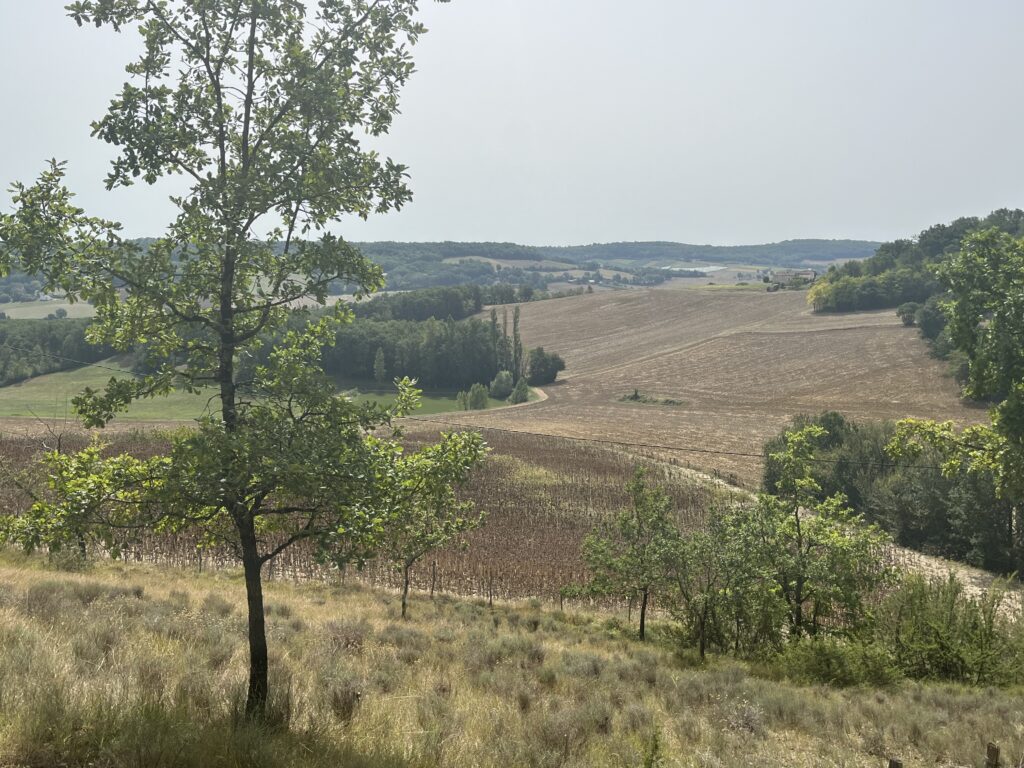

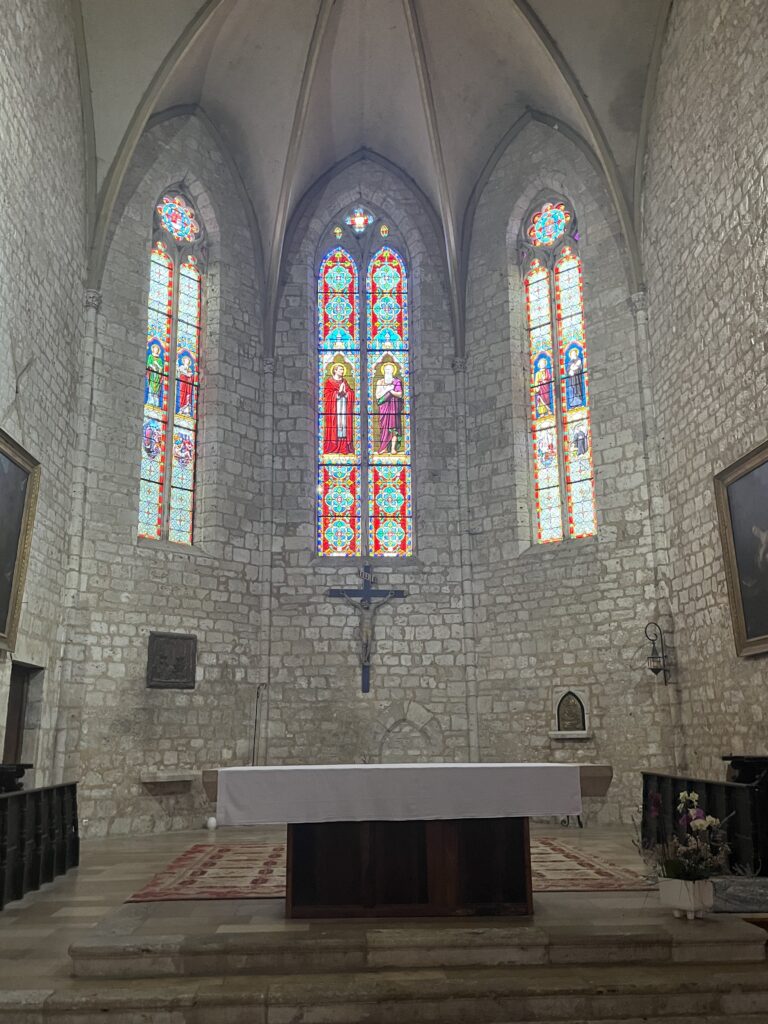


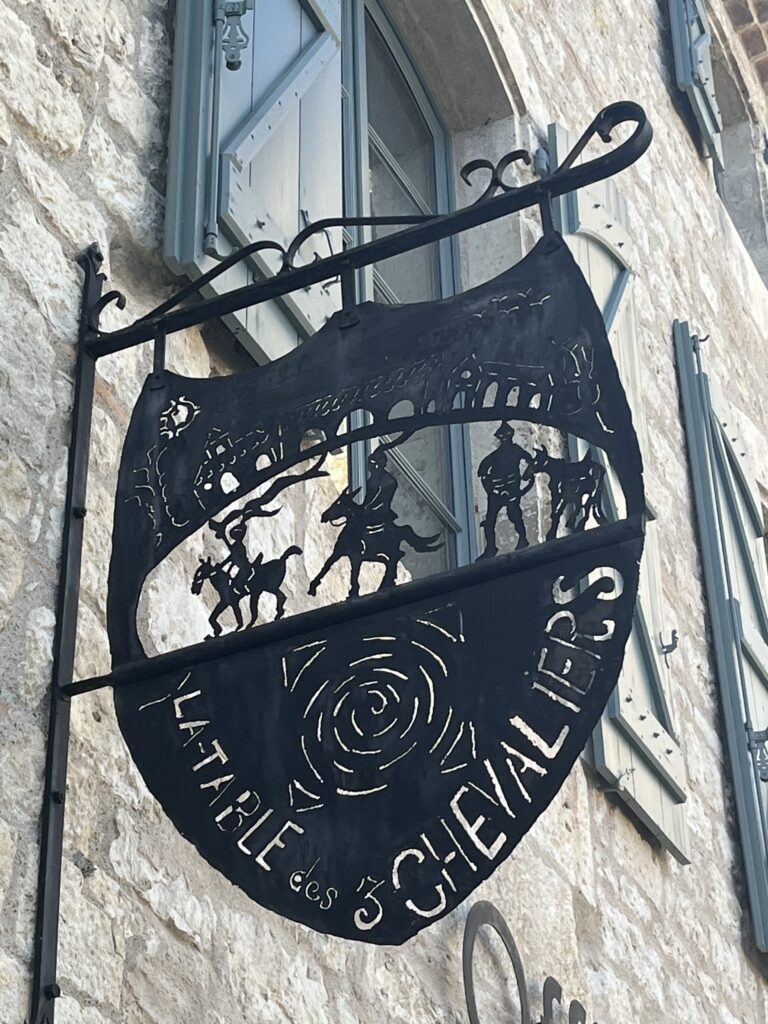


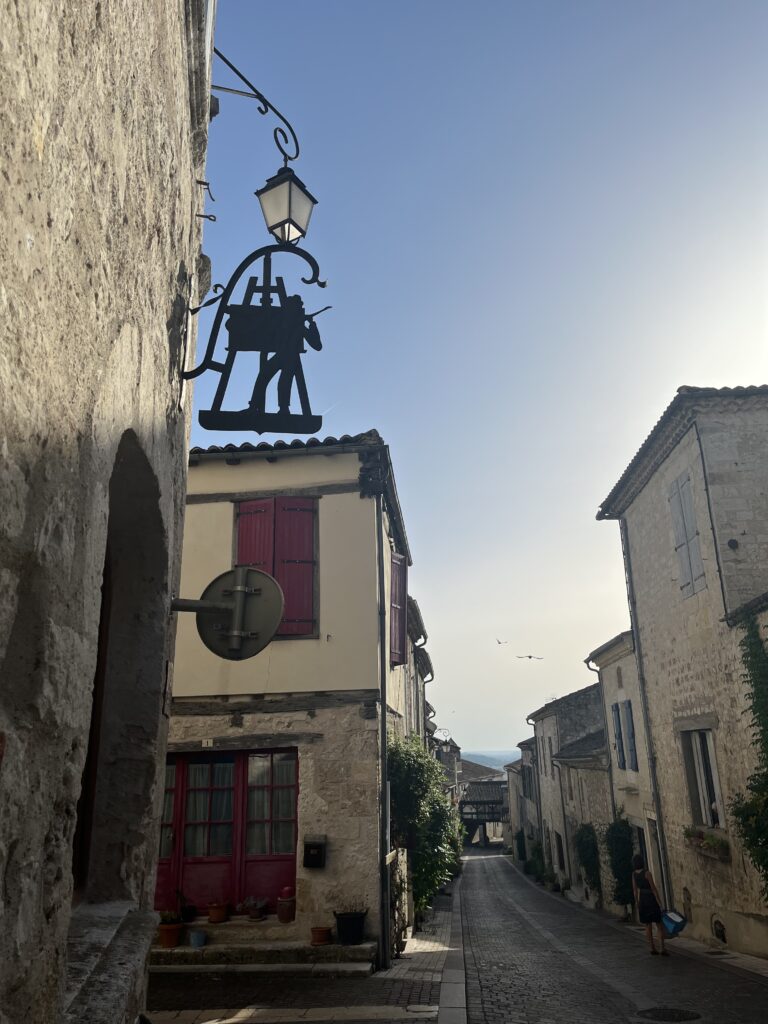


It may be that the sunflowers are faded after blooming to allow their seeds to ripen.
It’s certainly possible – I have no idea how sunflowers work. But the look is definitely that of a field of corpses.